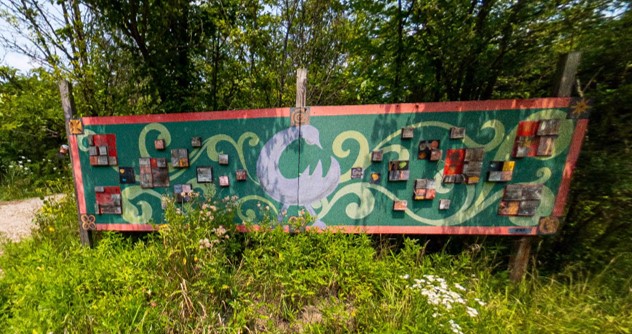360-degree field tours highlight three Detroit urban farms
High quality imagery and interviews show the successes and challenges of urban food production.

Population loss in Detroit, Michigan, and other Rust Belt cities has created large areas of vacant and underutilized land. Some sites have been repurposed for growing food and flowers, for personal use or neighborhood use as community gardens. Only a small percentage of urban land is used for growing food commercially. Detroit’s urban farm ordinance defines an urban farm as having at least an acre of production. The exact number of sites growing food for sale depends on the definition of an urban farm’s area and annual sales. According to Naim Edwards, director of the Michigan State University Detroit Partnership for Food, Learning and Innovation, there are over 25 sites that have annual produce sales of at least $10,000 or at least a half-acre of production.
Producing fruits and vegetables on such a limited scale poses novel requirements for success relative to rural agriculture. While these urban growers are united by the city in which they grow food, the stories and production methods of Detroit urban growers are each unique.
What is a 360-degree field tour?
The 360-degree field tour project highlights the stories and production practices of urban farmers (Photo 1). Each field tour provides high-resolution images of a farm and gives viewers the experience of seeing the farm as if they were on site. Visitors to the online field tours will see how urban growers adapt to various production issues, marketing and sale of produce. This includes netting to deter flea beetles on cole crops, honey bee hives used for pollination, and solar energy used to power an irrigation source.
The field tours also include an interview with the urban grower or site manager. These interviews provide a perspective on land access and labor, where produce from urban farms is sold, and how growers rely on integrated pest management for insect and disease control.
The urban farm tour videos highlight minority farmers in two Detroit neighborhoods with production areas ranging from 1-7 acres. Viewers will learn about a farm that’s moving to a no-till system, the most common types of insect pests and tools to manage them, and challenges about using equipment in small spaces. Many urban farm sites are located adjacent to residential homes, and one site, D-Town Farms, describes the connection to indigenous growing practices and involving the community in growing efforts (Photo 2). Four sites in Ohio were previously profiled, and three urban farms in Detroit, as well as six urban farms in Illinois and Indiana, were recently added to this series.

The work of the 360-degree field tours is due to the efforts of the Great Lakes Urban Agriculture Working Group, of which Michigan State University Extension is a collaborating partner. The North Central Integrated Pest Management (IPM) Center funds the working group and the field tours.
The 360-degree field tour and interviews
Brother Nature Produce
Take a 360-degree field tour of Brother Nature Produce
Fisheye Farms
Take a 360-degree field tour of Fisheye Farms
D Town Farm
Take a 360-degree field tour of D Town Farm
The working group has also profiled urban farms in Illinois, Indiana and Ohio, and these 360 degree field tours and grower interviews are available here.
Other resources from the Great Lakes Urban Agriculture Working Group
In addition to the 360-degree field tours, the Great Lakes Urban Agriculture Working Group offers research-based information specific to this unique scale of farming operations. Several free webinars on pest management issues for urban farms have been offered and are being prepared as recordings. The group developed 14 pest management cards on wildlife and insect pests of urban farms an community gardens. These cards are available to download for free in English and Spanish. Urban farmers are encouraged to use these free resources or submit their questions to Ask Extension if they seek additional resources on farm operations or production.



 Print
Print Email
Email



